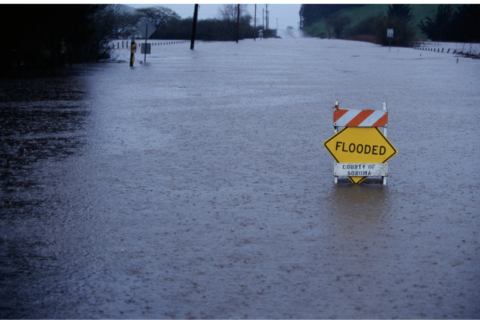From wildfires in Hawaii to hurricanes in Florida, communities across the United States have faced devastating natural disasters this summer. Local elected officials play a crucial role in disaster resilience, whether it’s planning for disasters to mitigate risks or leading their community through recovery.
Officials have distinct roles before, during, and after disasters. Pre-disaster, they advocate risk reduction through codes and planning. During disasters, they rely on emergency managers’ expertise, empowering them to make decisions and foster communication. After disasters, officials focus on resilience through investments and assistance programs.
The Federal Emergency Management Agency (FEMA) published the “Local Elected and Appointed Officials Guide: Roles and Resources in Emergency Management” in 2022 to aid local elected officials in disaster preparedness, response and recovery. It identifies roles and responsibilities for local leaders before, during and after disasters, including:
Understanding Threats and Hazards
Resources are available to help senior officials understand the threats and hazards that present the greatest risks to their communities and how to reduce those risks.
- Officials must grasp potential threats, from natural disasters to emerging risks like cyberattacks and active shooters.
- Regular communication with emergency managers and risk assessments provide insights into threats and their impact on well-being, infrastructure and economy.
- Learning from past experiences is pivotal. Sharing insights and documenting lessons learned can cultivate effective leadership.
- In a climate-affected world, disaster preparedness faces new and amplified challenges. Impacts vary based on geography and land use. As temperatures rise, some areas confront intensified rainfall and flooding, while others grapple with heightened wildfire threats. These challenges disproportionately affect marginalized communities and vulnerable populations.
- Embedding emergency management principles within a community is crucial, especially as new risks emerge. This requires comprehensive strategies that encompass risk assessment, long-term resilience planning and adaptation. By adopting strategies that protect lives, assets and economic stability, communities can bolster their resilience.
Collaboration with Emergency Management
- Collaborating with emergency management personnel forms a cooperative framework, leveraging expertise and insights for effective disaster planning.Collaboration between officials and emergency managers is pivotal. Emergency managers, liaisons between private sector entities and critical infrastructure leaders, enhance communication and collaboration during response and recovery.
- Embedding emergency management principles within a community is crucial, especially as new risks emerge. This requires comprehensive strategies that encompass risk assessment, long-term resilience planning and adaptation. By adopting strategies that protect lives, assets and economic stability, communities can bolster their resilience.
Fostering Community Collaboration
Officials encourage collaboration among diverse stakeholders, bringing groups together for robust disaster response and recovery plans.
- Equitable planning involves engaging with underserved communities. Policies must be evaluated through an equity lens, ensuring fairness and inclusivity. Allocating resources to support underserved populations before disasters strike mitigates their vulnerability during crises.
- Recognizing the potential consequences of disasters starts with understanding demographics. Priority should be placed on historically underserved populations, individuals with disabilities, and those with special needs requiring extra assistance during crises. Tools like the Social Vulnerability Index offer insights into communities needing additional support in disaster preparation and recovery.
- Emergency managers, sources of insights into regional vulnerabilities, play a pivotal role in this process. Disaster consequences span the spectrum, from injuries to psychological distress. FEMA’s Resilience Analysis and Planning Tool equips officials with insights, enabling informed decisions.
To learn more, FEMA is hosting webinars to provide an overview of the Local Elected and Appointed Officials Guide in October.
Guiding communities in addressing threats and hazards requires a comprehensive approach. Local officials are in a position to foster collaboration, understand consequences and steer communities through preparedness, response and recovery. Through strategic policies, collaboration and timely action, officials lay the groundwork for resilient communities.
Additional Federal Resources
- Pre-Disaster Recovery Planning Guide for Local Governments
- Public Assistance Program & Policy Guide (PAPPG) and Public Assistance Simplified Procedures Policy
- Hazard Mitigation Planning
- Social Vulnerability Index
- FEMA’s Resilience Analysis and Planning Tool (RAPT)
- Developing and Maintaining Emergency Operations Plans
- National Incident Management System Guideline for Mutual Aid
- Emergency Management Assistance Compact
- FEMA grants
- Expanding Mitigation
- Making the Connection to Equity
- Executive Order 13985, On Advancing Racial Equity and Support for Underserved Communities Through the Federal Government
- FEMA’s Building Private-Public Partnerships guide
- Making individual preparedness plans










